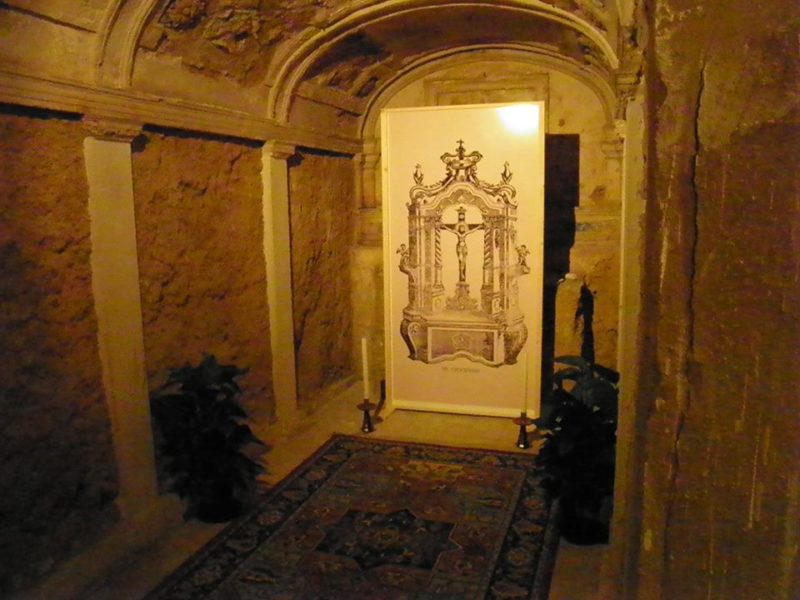Convent Santissimo Crocifisso In Santa Anna

The current Convent, the second of Castelvetrano, inhabited by the Capuchins was founded in 1623 the very large Convent, is known for the cult of the Most Holy miraculous crucifix, which the Capuchin Father Pietro da Mazara brought with him in assisting the soldiers as chaplain in the wars of Africa. Struck by cholera on his return to his homeland, he was miraculously saved by the crucifix that would have died before touching the ground. He therefore asked the captain of the ship not to throw his body overboard, but to have it buried in a convent of the order to have the crucifix exposed for the veneration of the faithful. The mortal remains of Father Pietro were composed in 1550 and the first Capuchin Convent of Castelvetrano, as the ship landed in the nearby port of Trapani. The religious who moved to the new headquarters in 1629, carried the body of the servant of God and the miraculous crucifix there with a solemn procession. Closed for the suppression of religious orders in 1866, it was returned to the Capuchins in 1937. In 1873 the parish was established there. Inside the Church the following stand out: the altar of the crucifix and the main altar surmounted by a valuable tabernacle and by a grandiose altarpiece that contains an artistic large-scale reliquary, often covered with a painting, of the same size, depicting the Immaculate Conception. , which is raised and lowered by means of a special vintage device. In the sacristy there is a monumental wardrobe from the 18th century. Mass on weekdays at 9.00 and on holidays at 9.00-10,30 and 17,30. The venerable image of the crucifix is placed on a coffin and is carried in procession through the streets of the city with a great crowd contest on May 3 and the following Sunday. (Source: vaticanoweb.com)
Inside the catacombs are the remains of Prince Giovanni III Aragona and Tagliavia, who died in 1624.
Card insertion: Ignazio Caloggero
Photo: WEB
Information contributions: Web, Region of Sicily
Note: The populating of the files of the Heritage database proceeds in incremental phases: cataloging, georeferencing, insertion of information and images. The cultural property in question has been cataloged, georeferenced and the first information entered. In order to enrich the information content, further contributions are welcome, if you wish you can contribute through our area "Your Contributions"



